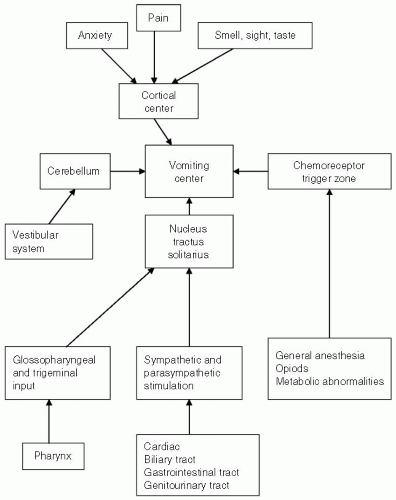Nondepolarizing muscle relaxants are commonly used in general anesthesia. The use of cholinesterase inhibitors to antagonize residual neuromuscular blockade is a well-accepted practice and, theoretically, may increase PONV. However, with the use of short- and intermediate-acting muscle relaxants, spontaneous recovery from neuromuscular blockade may be preferred to minimize the PONV associated with reversal agents. The role that neostigmine plays in causing PONV remains unresolved; there are studies that implicate neostigmine as a culprit, and there are as many studies that show otherwise.
22,
23,
24,
25 These differences may be related to confounding factors such as age of patients (adult vs. child), type of surgery (peripheral vs. gynecologic), IV induction agents (thiopental vs. propofol), and doses of neostigmine and anticholinergic agents (glycopyrrolate vs. atropine). Women and children are more prone to PONV, and laparoscopic surgery is associated with a higher risk. Atropine, unlike the quaternary anticholinergic glycopyrrolate, crosses the blood-brain barrier and is known to possess antiemetic properties. A recent meta-analysis maintains that there is inconclusive evidence to suggest that neostigmine, administered either with glycopyrrolate or atropine, increases the incidence of PONV.
26 In the interest of patient safety, reversal drugs should be used in appropriate doses when clinically indicated.









